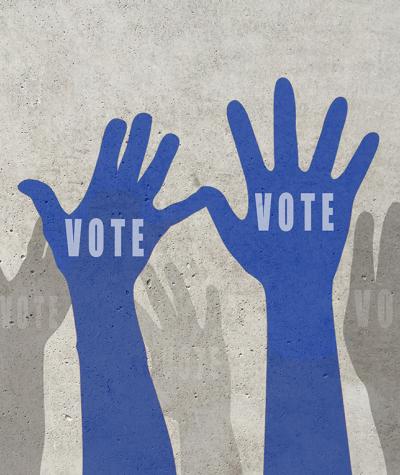In the coming weeks, I plan to lay out in some expanding detail the rights of voters to bring cases under the anti-intimidation statute of the Voting Rights Act: Section 11(b) of the Voting Rights Act (42 U.S. C. 1973i(b)). Today, I begin by examining the relevant legislative history of the statute and the legal standard for bringing cases under Section 11(b). In future postings, I will discuss the type of conduct that has been deemed to be prohibited under Section 11(b), standing to bring suit to enforce the provision, and the type of relief that may be sought in order to provide effective relief.
In 2004, we saw efforts to intimidate minority voters in several states using vote caging schemes. See here for my earlier piece on vote caging efforts in 2004. In 2006, there were other efforts to intimidate minority voters, often made anonymously. Take, for example, this flyer mailed to African-American voters in Dallas, Texas warning them that if they were registered by a certain non-profit group (ACORN), they would be arrested if they went to the polls to vote. With a person of color being a major party nominee for the office of President this year for the first time in history, Section 11(b) could become especially important in the months ahead.
I start with the statute itself and the legislative history that explains its purposes. Section 11(b) of the Voting Rights Act (42 U.S.C. 1973i(b) states that:
“No person, whether acting under color of law or otherwise, shall intimidate, threaten, or coerce, or attempt to intimidate, threaten, or coerce any person for voting or attempting to vote, or intimidate, threaten, or coerce, or attempt to intimidate, threaten, or coerce any person for urging or aiding any person to vote or attempt to vote, or intimidate, threaten, or coerce any person for exercising any powers or duties under section 3(a), 6, 8, 9, 10, or 12(e).”
The legislative history of this law makes clear that Congress wanted to expand the scope of voter protection by enacting a law that would bar voter intimidation. In fact, Congress’s explanations of the purposes behind Section 11(b) support the view that neither proof of intent to intimidate nor proof of any actual effect of voter intimidation must be shown to establish a violation of Section 11(b). Rather, as DOJ has read the statute, an interpretation I share, plaintiffs need only show that the conduct engaged in had a tendency to intimidate, threaten or coerce a reasonable voter. Importantly, there is no requirement that to prevail under Section 11(b) that a plaintiff prove any purpose of subjective intent to intimidate.
Section 11(b) of the Voting Rights Act was drafted the Department of Justice and submitted to Congress during the Johnson Administration. It was intended to relieve a burden that the Justice Department had faced since 1957 when the Civil rights Act of 1957 had been enacted, specifically 42 U.S.C. 1971(b).[1] Following enactment of the Civil Rights Act of 1957, courts had required proof of subjective intent in voting rights cases. When Attorney General Katzenbach appeared before the House Judiciary Committee in 1965, he explained the reasons that for including anti-intimidation provisions in the proposed Voting rights Act:
“The litigated cases amply demonstrate the inadequacies of current statutes prohibiting voter intimidation.
* * *
"[T]he most serious inadequacy results from the practice of district courts to require the Government to carry a very onerous burden of “purpose.” Since many types of intimidation, particularly economic intimidation, involve subtle forms of pressure, this treatment of the purpose requirement has rendered the statute largely ineffective.
"In our view, section 7 of the bill [which later became Section 11] which prohibits intimidation of persons voting or attempting to vote under the bill represents a substantial improvement over 42 U.S.C. 1971(b)….Under the language of Section 7, no subjective “purpose” need be shown…in order to prove intimidation under the proposed bill. Rather defendants would be deemed to intend the natural consequences of their actions.”[2]
When the House report was subsequently issued, it contained the same characterization of what would become Section 11(b) of the Voting Rights Act. With respect to Section 11(b), the Report said that “unlike 42 U.S. C. 1971(b)(which requires proof of a ‘purpose’ to interfere with the right to vote) no subjective purpose or intent need be shown.” H. Rep. No. 439, 89th Congress, 1st Sess. 32 (1965).
In light of this clear legislative history, an objective standard best effectuates Congress’ stated intent to broaden the protective umbrella of federal anti-intimidation statutes. Section 11(b) has been underutilized in recent years, even though efforts to suppress the minority vote have become increasingly pervasive. “Vote Fraud” has become a banner for vote suppressors to hide behind. Rhetoric is one thing, but when the vote caging and other nefarious schemes to suppress minority voter turnout are enlisted, it is time for law enforcement officials to unfurl Section 11 (b) to safeguard the fundamental right of every citizen to vote.
[1] Under Section 1971(b), it is unlawful to intimidate, threaten, coerce, or attempt to intimidate, threaten or coerce any other person for the purpose of interfering with the right to vote.” (Emphasis supplied). Section 11(b) does not include the underlined and emphasized language, and this was done to eliminate the subjective intent requirement.
[2] See Hearings on HR 6400 Before Subcommittee No. 5 of the Committee on the Judiciary, U.S. House of representatives, 89thCongress, 1st Sess. 11(1965)(Statement of Nicholas Katzenbach, Attorney General of the United States).
